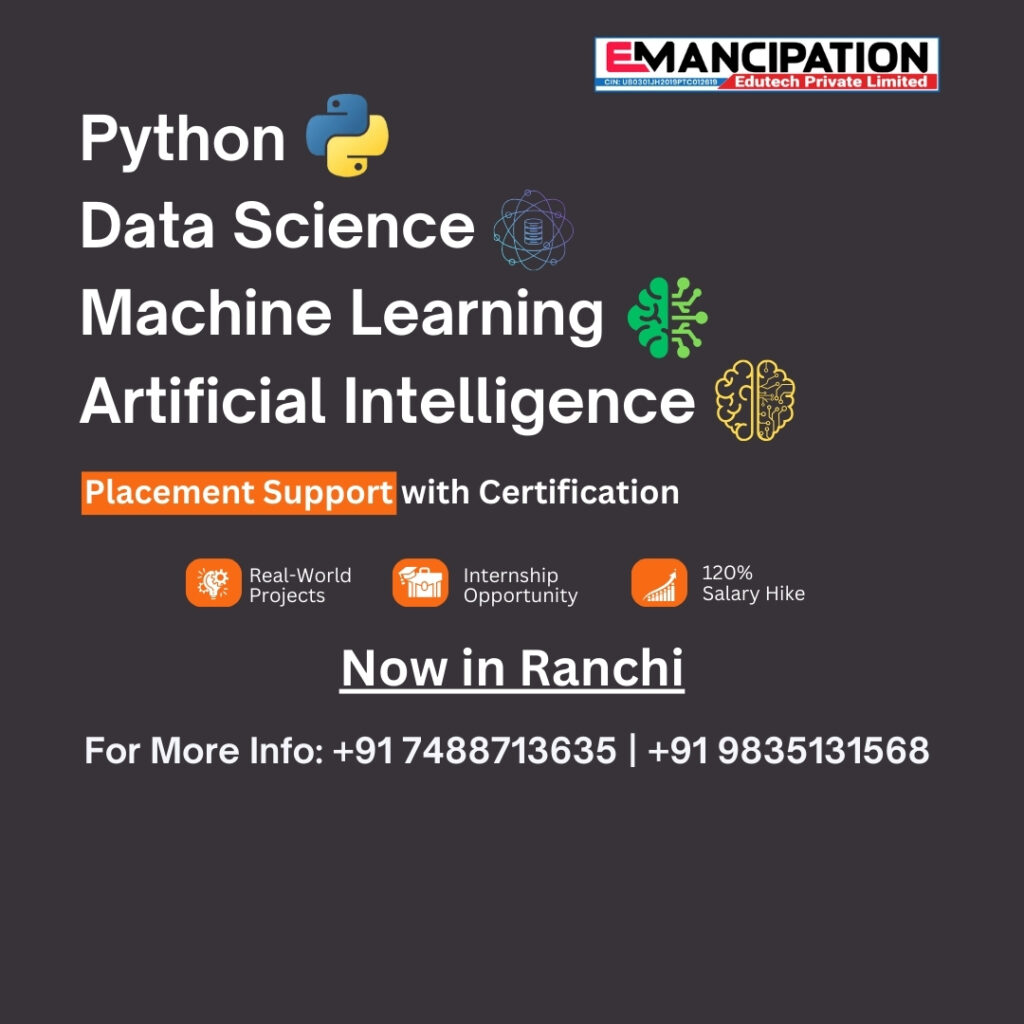Artificial Intelligence Course in Ranchi – Learn AI Skills for a High-Growth Career
Introduction Artificial Intelligence is no longer the future — it is the present. From ChatGPT to self-driving cars, facial recognition to fraud detection, AI powers almost every digital experience around us. As industries rapidly shift towards automation and data-driven technologies, the demand for skilled AI professionals has exploded. If you want to become a part of this revolution, enrolling in an Artificial Intelligence Course in Ranchi is the perfect first step. Emancipation Edutech Pvt. Ltd. offers a high-quality, practical, and beginner-friendly program that prepares you for real-world tech careers. Why Choose an Artificial Intelligence Course in Ranchi? Many students believe they need to move to metro cities to learn advanced technologies. But today, Ranchi is emerging as a growing hub for IT training and tech talent. By joining an Artificial Intelligence Course in Ranchi, you get: AI is one of the best career options today because it offers: Why Emancipation Edutech Offers the Best Artificial Intelligence Course in Ranchi Emancipation Edutech has built a strong reputation for skill-based and job-ready training. Our Artificial Intelligence Course in Ranchi helps you learn everything from basic Python to advanced AI models in a simple, easy-to-understand format. 1. Step-by-Step Learning for Beginners You don’t need any prior coding experience. Our course begins with: We gradually move into advanced AI topics so you learn smoothly and confidently. 2. Industry-Level Curriculum The syllabus matches global standards and includes: Every module is designed to prepare you for real industry projects. 3. Hands-On Projects During the Artificial Intelligence Course in Ranchi, you will build practical projects such as: These portfolio projects make your resume strong for job interviews. 4. Expert Trainers Your trainers are AI professionals with real experience in ML, data analytics, and software development. You get the benefit of: 5. Placement Support Emancipation Edutech provides 100% placement assistance, including: We aim to help every student become job-ready. What You Learn in the Artificial Intelligence Course in Ranchi Here’s a detailed breakdown of the course modules: Module 1: Python Programming Module 2: Data Science Basics Module 3: Machine Learning Module 4: Deep Learning Module 5: Natural Language Processing Module 6: Computer Vision Module 7: AI Tools & Frameworks Module 8: Capstone Projects You will develop a final AI-based project to demonstrate your skills. Career Opportunities After Completing the Artificial Intelligence Course in Ranchi After completing the training, you can apply for roles such as: AI professionals are needed in industries like: Your skills can take you anywhere — from a local job in Ranchi to remote work with international companies. Who Can Join This Course? Our Artificial Intelligence Course in Ranchi is suitable for: If you’re curious, hardworking, and willing to learn, this course is perfect for you. Conclusion AI is not just a trend — it is the foundation of the next generation of jobs. By joining Emancipation Edutech’s Artificial Intelligence Course in Ranchi, you get world-class training, hands-on practice, expert guidance, and strong career support. If you want to build a stable and high-paying career in the tech world, this is your chance. Start your AI journey today — your future is waiting!
Artificial Intelligence Course in Ranchi – Learn AI Skills for a High-Growth Career Read More »




